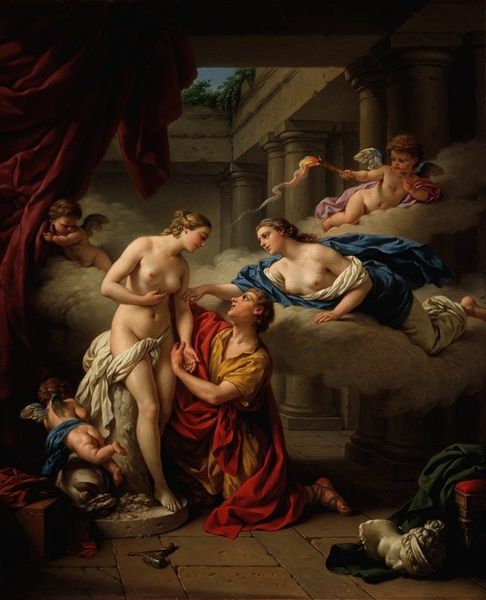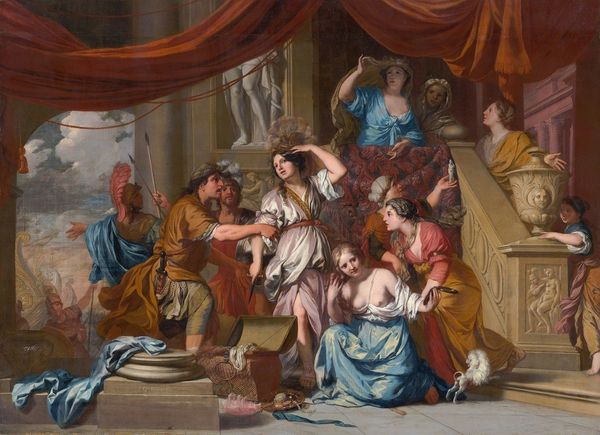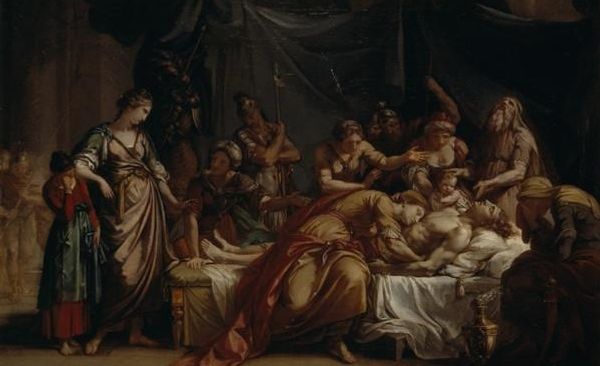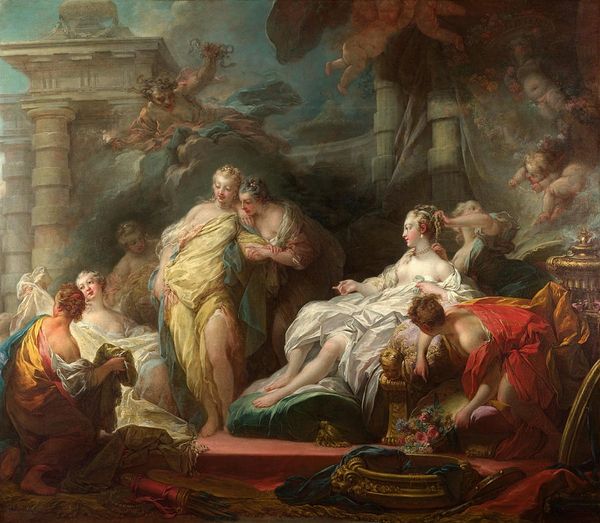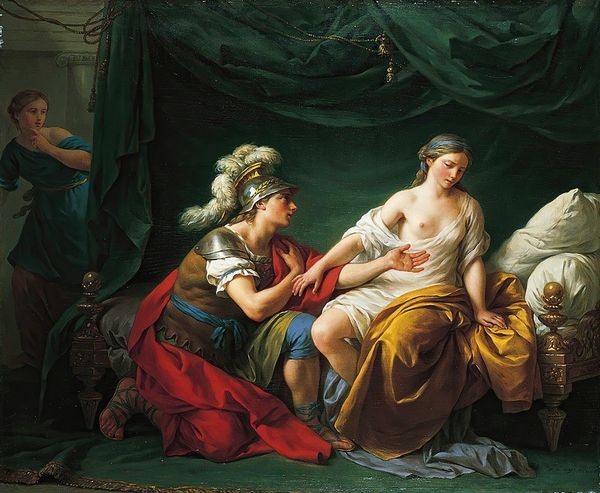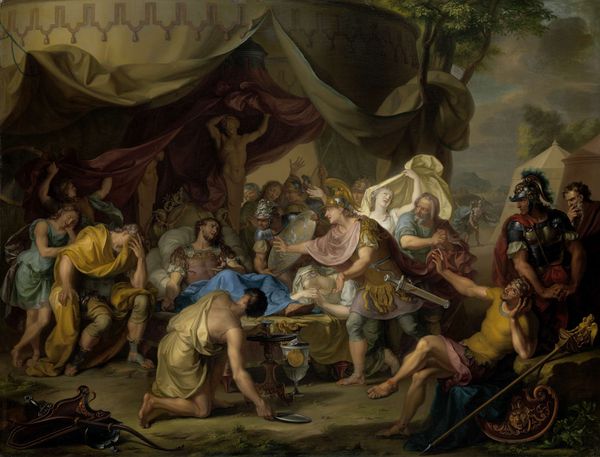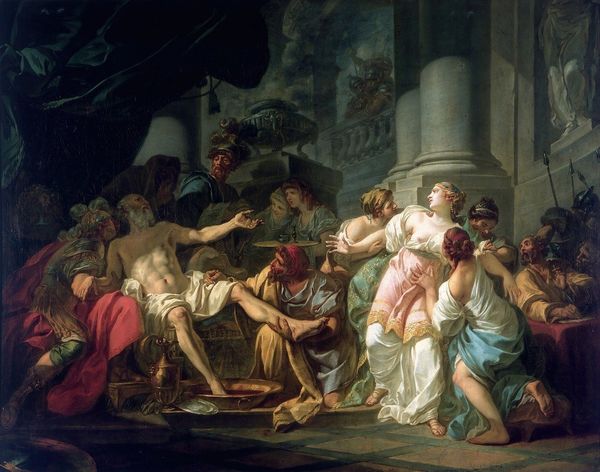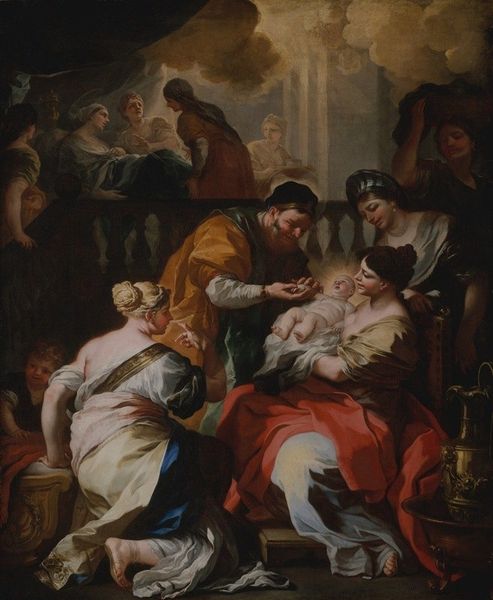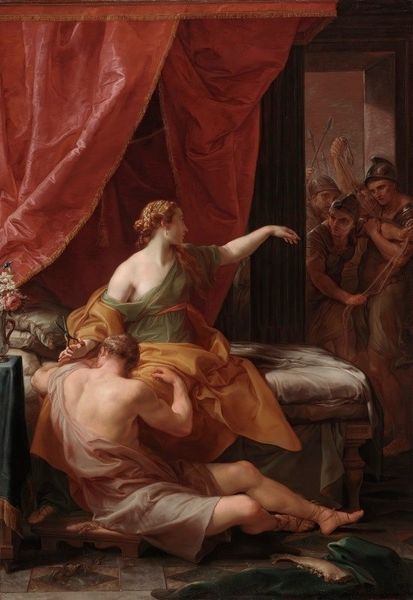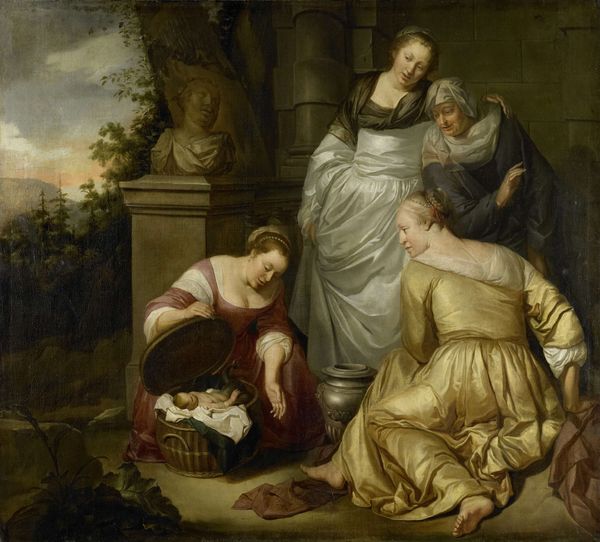
Copyright: Public Domain: Artvee
Editor: Here we have Louis-Jean-François Lagrenée's "The Death of Darius’ Wife", painted around 1784. It’s oil on canvas and portrays a scene of mourning. The composition is really striking. What catches your eye in this piece? Curator: What I find compelling is how Lagrenée situates this scene within a broader narrative of power, gender, and conquest. Consider, for a moment, the position of women in times of war. How are their bodies, their grief, rendered invisible or appropriated to legitimize the victor’s power? Editor: That's a very interesting way to frame it. I hadn’t thought about that aspect. The focus seems to be Darius’ wife, but are you saying there’s a deeper layer of meaning concerning the collective female experience? Curator: Precisely. Lagrenée presents the dying queen as the emotional focal point, but this portrayal also subtly interrogates the socio-political implications of warfare and imperial expansion, doesn't it? The fallen queen as a symbol. But a symbol of what? Of whose narrative? Consider who commissioned this work, and what purpose such depictions might serve. Editor: So it's not just a historical scene but a commentary on the very structure of power and how those stories get told…and who gets to tell them? Curator: Exactly. By focusing on the ‘death’ of the queen—a passive act in itself—the painting subtly directs our attention towards questions of agency and representation within a patriarchal framework. The woman's perspective is often lost in grand narratives of history. Editor: That gives me so much to think about. I'll never look at a "history painting" the same way again. Curator: And hopefully consider whose history, and whose story is left out. That is, for me, the real power of art.
Comments
No comments
Be the first to comment and join the conversation on the ultimate creative platform.
